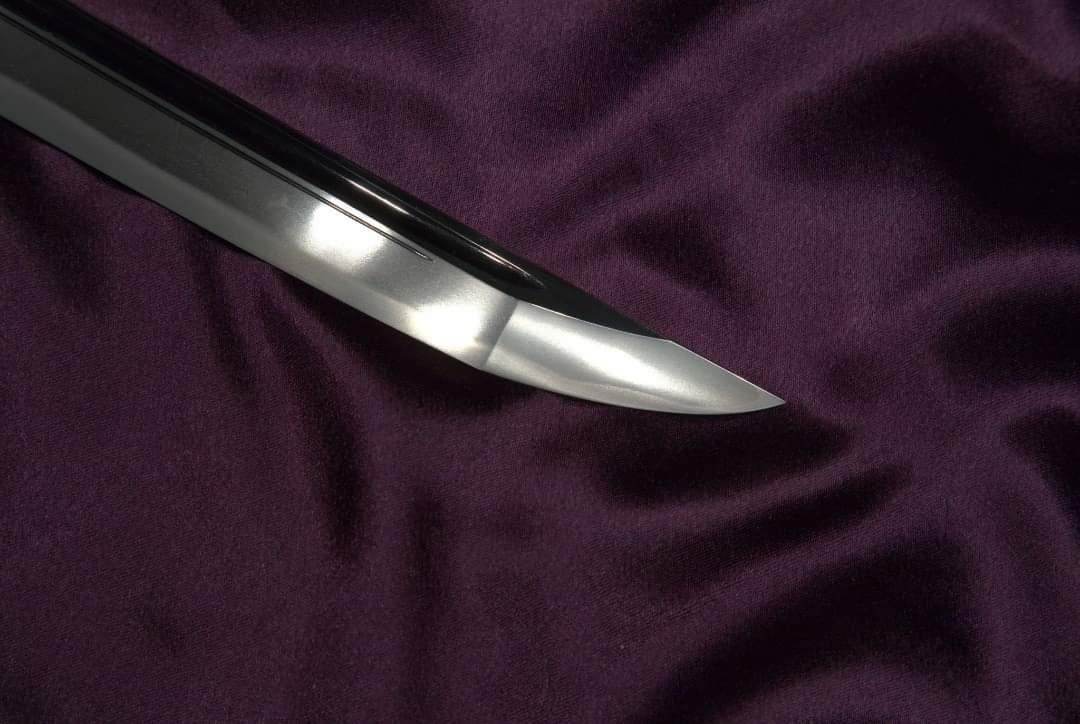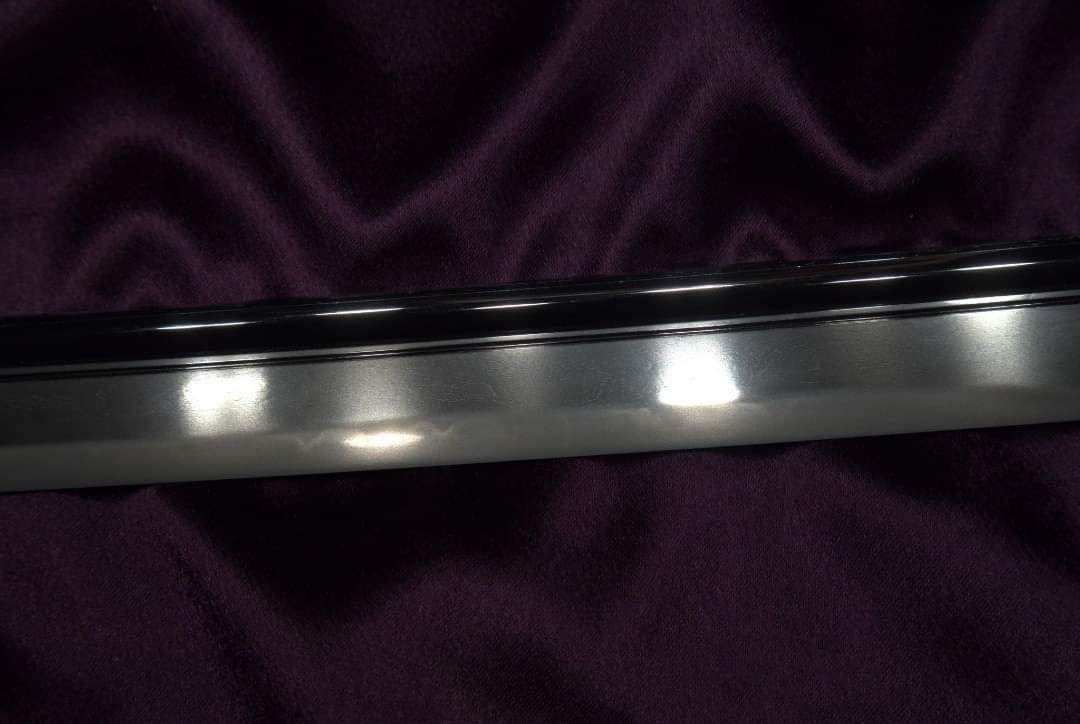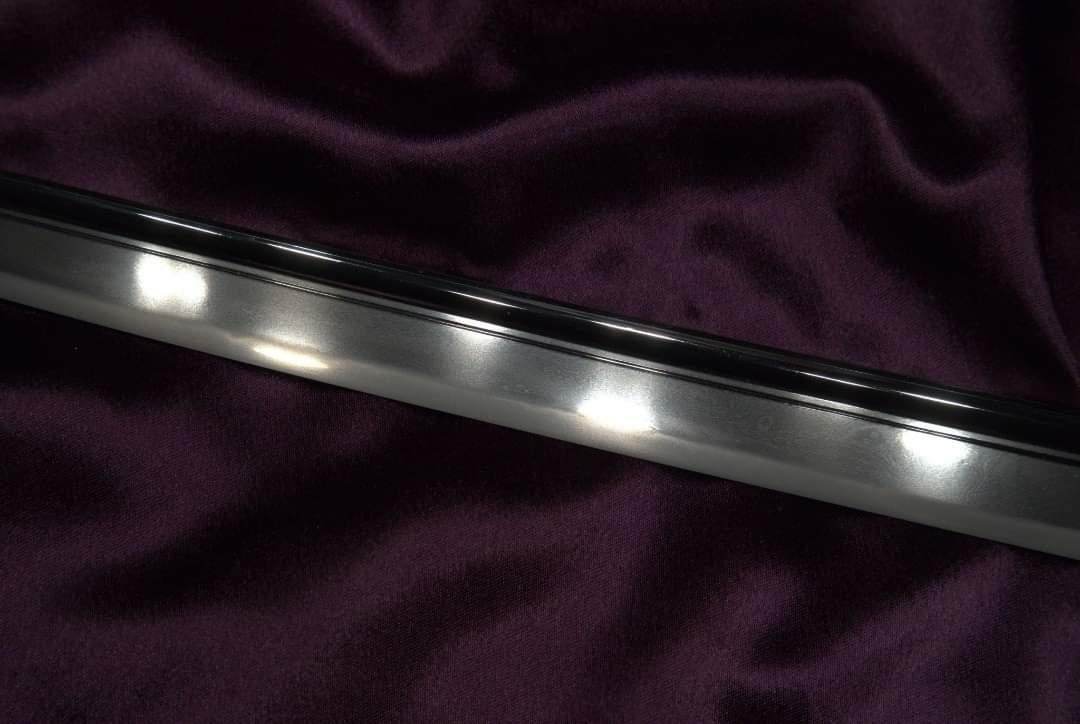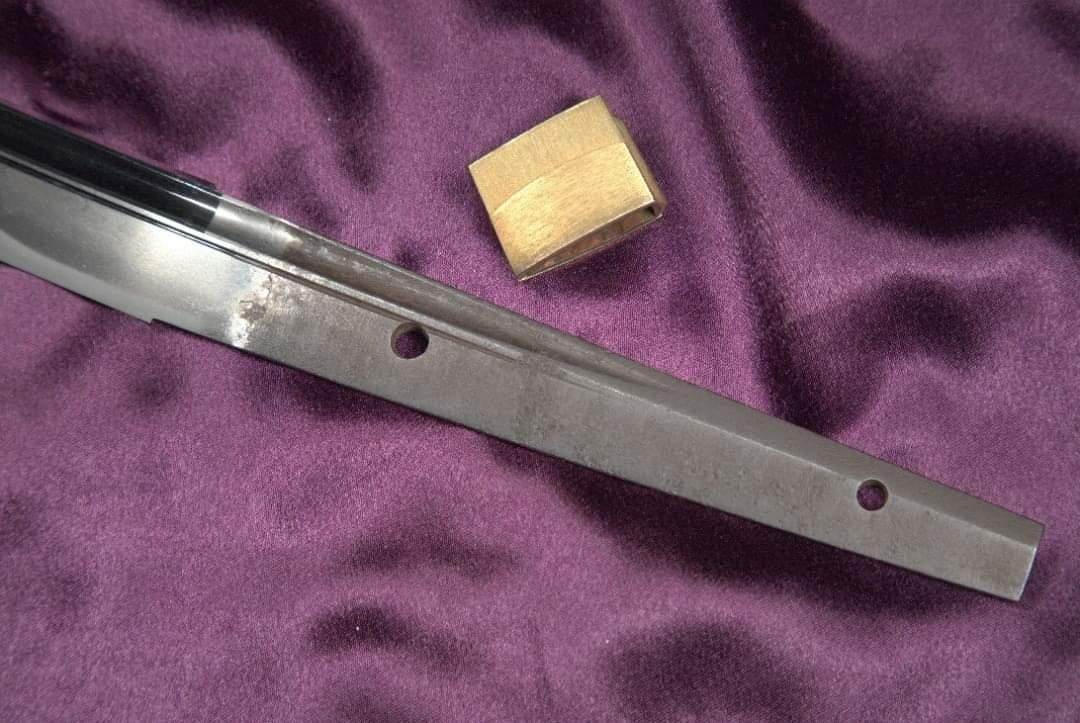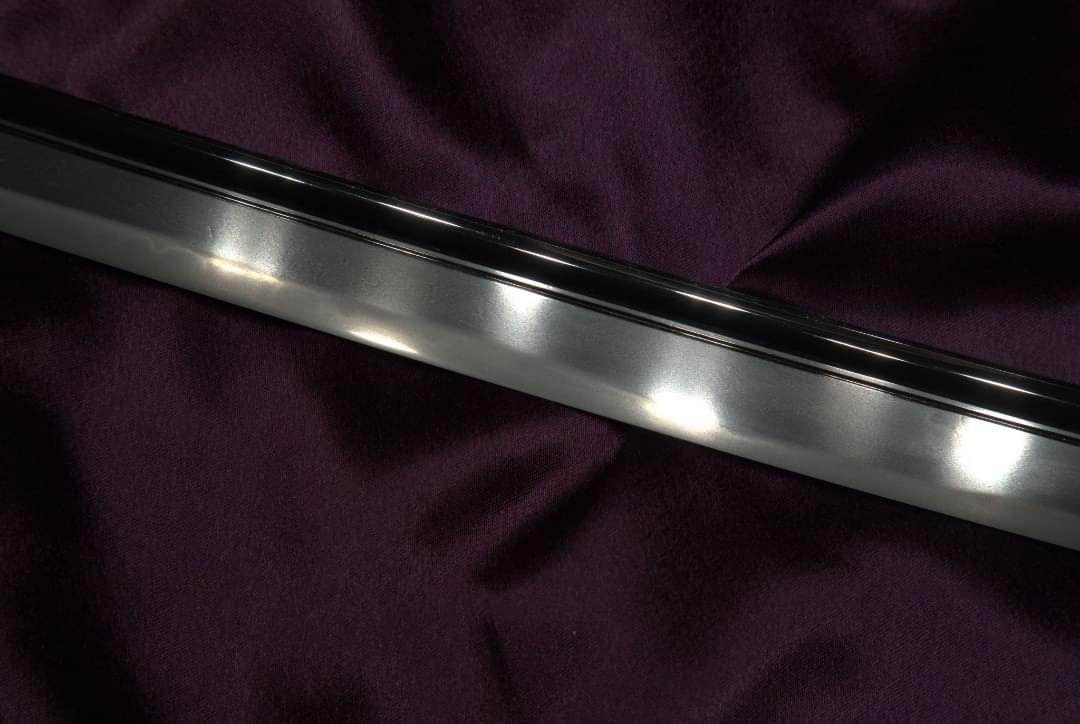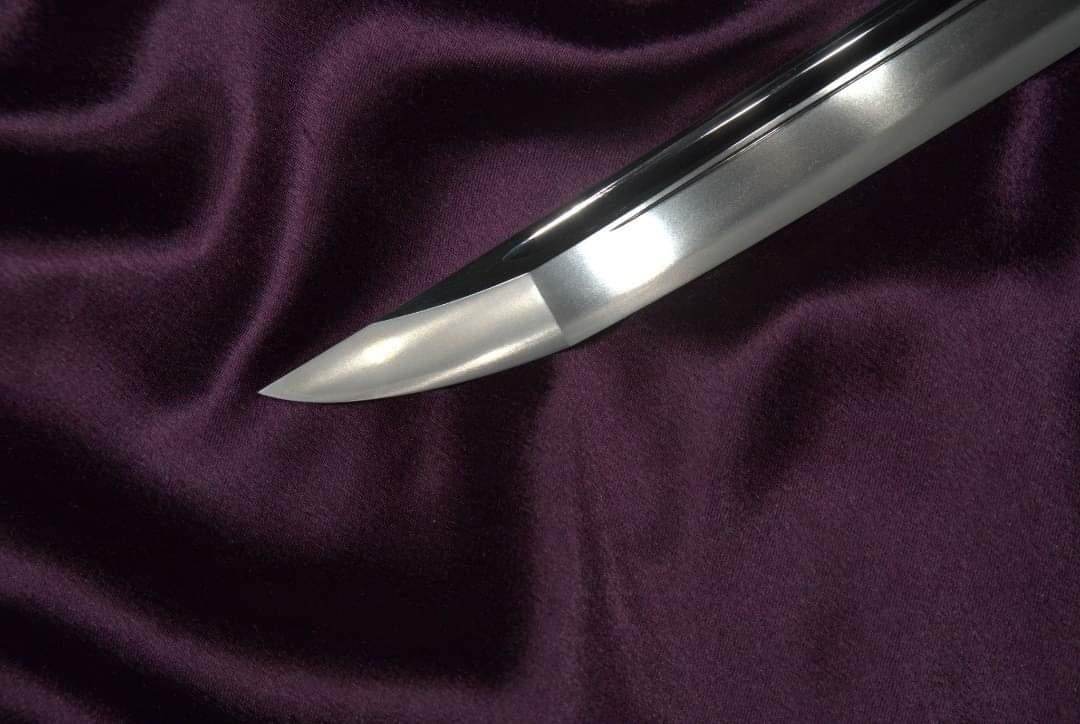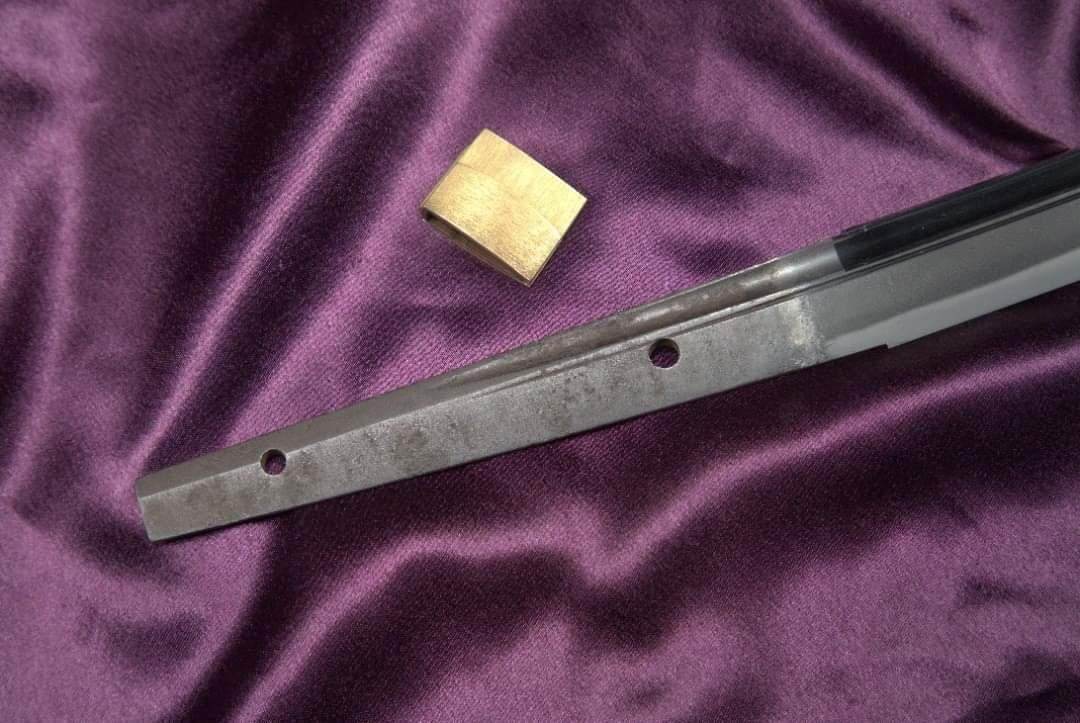Description
Explanation Motoshige (元重) was a smith of the Bizen Osafune School, but belonged to a different local lineage than for example Kanemitsu (兼光) and Chōgi (⻑義). We know dated works from the end of the Kamakura period, i.e. the Shōwa era (正和, 1312-1317), to the mid-Nanbokuchō period, i.e. the Jōji era (貞治, 1362-1368), and there exists the theory that two generations have been active over that period of time. As for Motoshige’s workmanship, he forged a kitae that is mixed with nagare-masame and jifu and hardened a hamon with prominent angular gunome, slanting elements, and hataraki like saka-ashi and yō, and with the pointed kaeri, we recognize certain Aoe (⻘江) elements. This tendency towards Aoe is regarded as a characteristic feature of Motoshige.
This blade shows an overall standing itame that is mixed with mokume and nagare and that features ji-nie, fine chikei, jifu, and a midare-utsuri. The hamon is based on an angular gunome in ko- nie-deki with a rather tight nioiguchi and is mixed with gunome, ko-chōji ko-gunome, ashi, yō, kinsuji, and sunagashi. Thus, the interpretation clearly reflects the characteristic features of Motoshige. In addition, particularly the ji showing a midare-utsuri whose antai is mixed with jifu and the hamon being based on an angular gunome that is frequently interrupted by indentations that are referred to as negative togariba is very typical for the smith. The blade feels massive in hand and has plenty of niku and we have here a textbook example of Motoshige that is of an outstanding deki.

